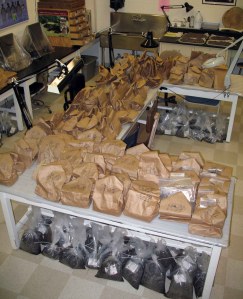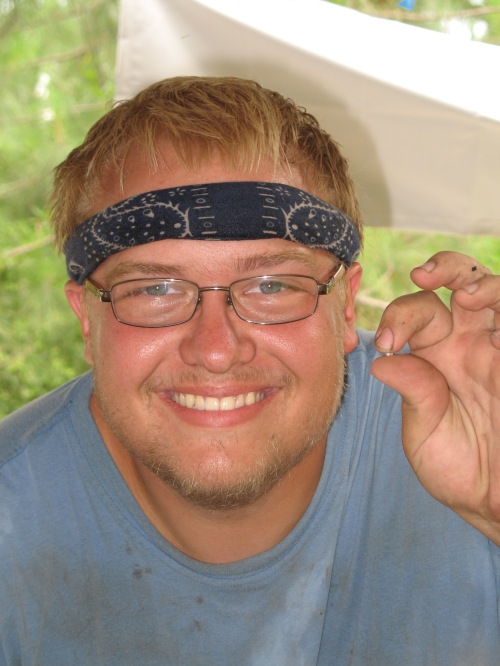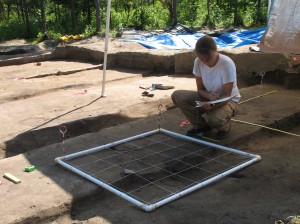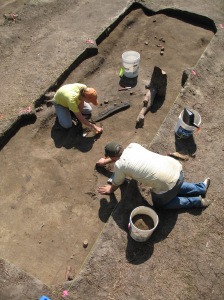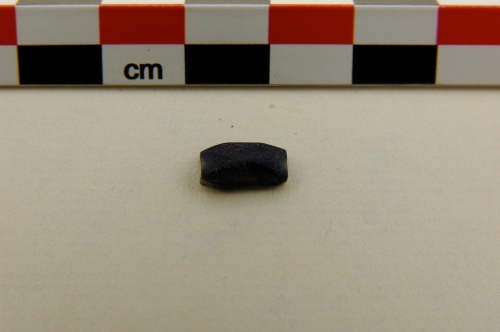Melanie Wing asked whether there was a ditch on the fourth side of the structure and she also wanted to know more about a bead…
We spent a little time during our last day in the field searching for evidence of a ditch feature on the south side of the building but the single small test we excavated did not show definitive evidence of such. This leaves Melanie’s question open but it stands to reason we will eventually determine the “casa grande” was completely encircled by a ditch.
It isn’t common to see ditch features closely surrounding Native buildings but there may be some good reasons for this one we have discovered. I suspect the ditch was a source of soil that was banked up around the walls of the building; this was not an uncommon practice. The ditch would have also served to accentuate the special nature of the structure, setting it apart from the general living space and perhaps enhancing its appearance.
As for the opaque white glass bead: simple white or blue beads are notoriously difficult to date on their own. But as we archaeologists say constantly, context is everything. In other words, although simple white beads were made and used for a very long time, from at least the early sixteenth century into the modern period, recovery of one on a site with a relatively “pure” early sixteenth century component indicates that it too dates from that time. Later on we may learn differently but at this point the bead doesn’t disrupt the overall pattern that is emerging.
Thanks for your great questions!
